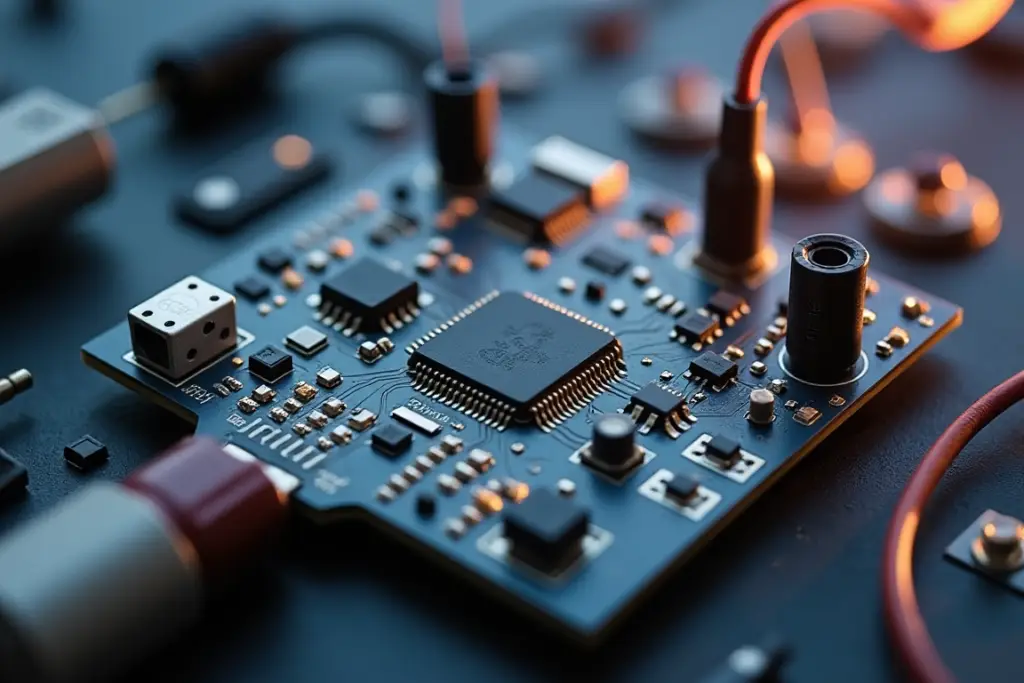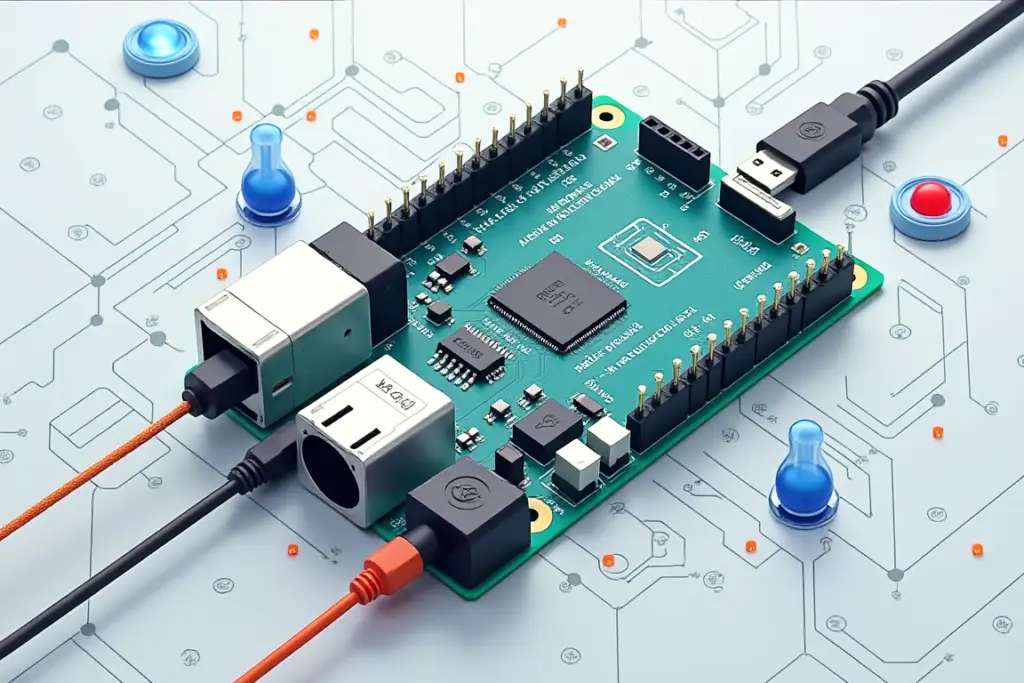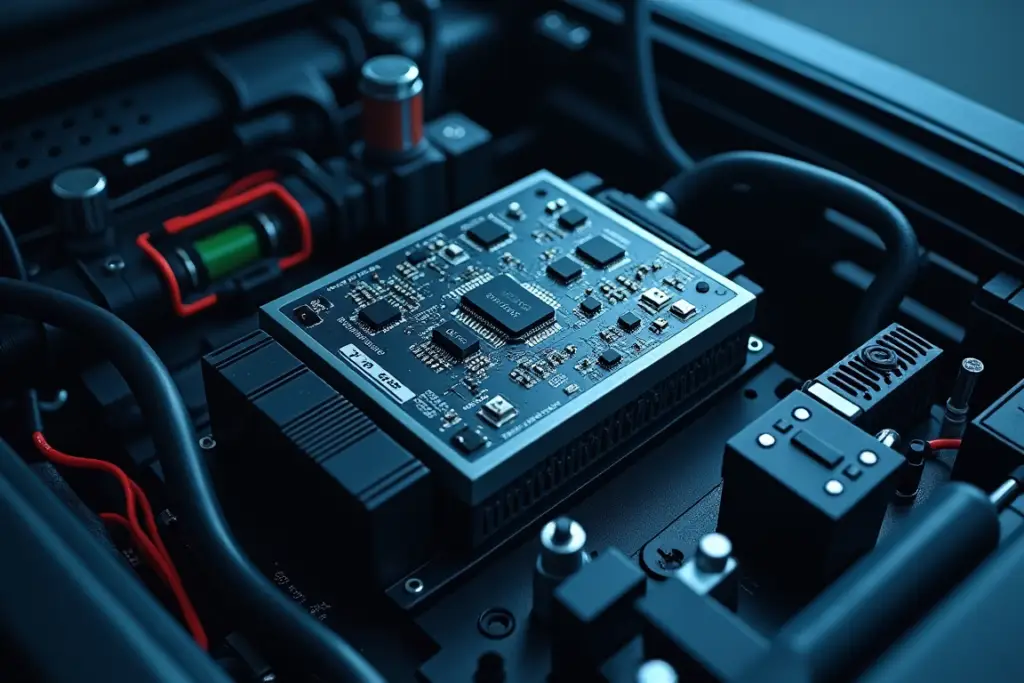In today’s fast-paced technological world, embedded systems play a pivotal role in making devices smarter and more efficient. Whether it’s your smartphone, smart home appliances, or industrial machines, embedded systems are at the core of these innovations. Let’s dive into what embedded systems are, their components, and why they are so crucial in modern electronics.
What Are Embedded Systems? 🖥️
An embedded system is a specialized computer designed to perform a specific task or function within a larger system. Unlike general-purpose computers, which can run various applications, embedded systems are dedicated to particular operations, often with real-time constraints. These systems are deeply integrated into their respective devices, making them both efficient and reliable.
For example:
- Microwave Ovens: Use embedded systems to control cooking times and power levels.
- Wearable Devices: Track health metrics using embedded systems for real-time processing.

Core Components of Embedded Systems 🔧
Embedded systems are composed of several key components that work together to achieve their specific function. These components include hardware, software, and communication protocols. Let’s break them down:
| Component | Description |
|---|---|
| Microcontroller | The brain of the embedded system; it processes data and executes tasks. |
| Memory | Stores the software (firmware) and temporary data. |
| Sensors/Actuators | Collect data from the environment or perform actions based on system inputs. |
| Power Supply | Provides the necessary energy for the system to function. |
| Input/Output (I/O) | Interfaces through which the system interacts with the external world. |

Types of Embedded Systems ⚡
Embedded systems can be classified based on their complexity, performance, and application. Some of the common types include:
1. Stand-Alone Embedded Systems 🏠
These systems function independently and do not require a host computer. Examples include:
- Digital Watches
- Microwave Ovens
2. Real-Time Embedded Systems ⏱️
These systems must respond to inputs within a strict time frame, making them critical in applications where timing is crucial:
- Automotive Airbags
- Industrial Automation Systems
3. Networked Embedded Systems 🌐
These systems are connected to other systems or networks to exchange data and perform complex tasks. Examples include:
- Smart Thermostats
- IoT Devices
Applications of Embedded Systems 💡
Embedded systems are found in a wide range of devices that we use daily. Let’s explore some key areas where embedded systems have revolutionized industries:
1. Consumer Electronics 🎧
Many of our everyday electronics, such as smartphones, smart TVs, and wearables, rely on embedded systems to manage and optimize their functions.
2. Automotive Industry 🚗
Embedded systems are critical for advanced safety systems, navigation, and engine control. Examples include:
- Advanced Driver Assistance Systems (ADAS)
- Electronic Control Units (ECUs)

3. Healthcare 🏥
In healthcare, embedded systems enable real-time monitoring and control of medical devices like pacemakers, blood pressure monitors, and infusion pumps.
4. Industrial Automation 🏭
Embedded systems control machinery and processes in manufacturing plants. They ensure precision, efficiency, and safety in operations.
Advantages of Embedded Systems ✅
Embedded systems offer numerous benefits that make them essential in modern technology. Here are some key advantages:
1. Efficiency
Since embedded systems are designed for specific tasks, they consume fewer resources and can perform operations faster than general-purpose computers.
2. Cost-Effective
Due to their specialized nature, embedded systems are usually less expensive to produce than general-purpose systems.
3. Small Form Factor
Embedded systems are compact and can be embedded into devices of various sizes, from small sensors to large machines.
4. Reliability
Embedded systems are built for specific tasks, which makes them highly reliable in their application.

Challenges in Designing Embedded Systems ⚠️
While embedded systems are powerful, designing them comes with its own set of challenges:
1. Resource Constraints
Embedded systems often operate with limited resources such as memory, processing power, and energy. Optimizing these resources is crucial for efficient performance.
2. Real-Time Constraints
In certain applications, embedded systems must respond to external events within a fixed time frame. Failure to meet these deadlines can have serious consequences.
3. Security Risks
Since many embedded systems are connected to the internet or networks, they are vulnerable to cybersecurity threats. Ensuring robust security is a top priority.
4. Maintenance
Once deployed, maintaining embedded systems can be challenging, especially in devices that are hard to access or don’t allow for easy software updates.
Designing Embedded Systems: A Step-by-Step Approach 🛠️
Designing an embedded system involves multiple steps, from identifying the requirements to testing the final product. Let’s go through the typical process:
1. Define Requirements 📋
Understand the specific tasks the embedded system must perform. This includes deciding on input/output requirements, processing power, and communication protocols.
2. Choose the Right Hardware 💻
Select an appropriate microcontroller, sensors, and actuators based on the system’s needs. Popular microcontrollers include:
- Arduino: Great for prototypes.
- Raspberry Pi: Offers more processing power for advanced applications.
3. Develop the Software 💾
Write the firmware (software embedded on the microcontroller) that controls the hardware and handles input/output operations. This is usually done in languages like C or C++.
4. Test and Debug 🔍
Testing and debugging ensure that the system meets the requirements and functions correctly. This step often involves simulations and real-world testing.
5. Deployment and Maintenance 🔧
Once the system is fully developed, it is deployed into the target device. Post-deployment, it may require updates and maintenance, especially in the case of software bugs or security patches.

The Future of Embedded Systems 🔮
As technology advances, the scope of embedded systems continues to grow. Some exciting trends include:
- Internet of Things (IoT): Embedded systems are at the heart of the IoT revolution, connecting everyday objects to the internet.
- AI Integration: Embedded systems are increasingly being integrated with artificial intelligence to enable smarter and more autonomous devices.
- Edge Computing: With more devices becoming connected, embedded systems will play a critical role in processing data locally (at the edge) to reduce latency and bandwidth usage.
Conclusion: The Role of Embedded Systems in Modern Technology 🌟
Embedded systems are integral to the functioning of countless devices we use every day. From consumer electronics to industrial machinery, they make our lives more efficient, connected, and safe. Whether you’re designing an embedded system for a smart home device or working on the latest IoT innovation, understanding these systems’ components, applications, and design processes is key to success in the world of electronics.

